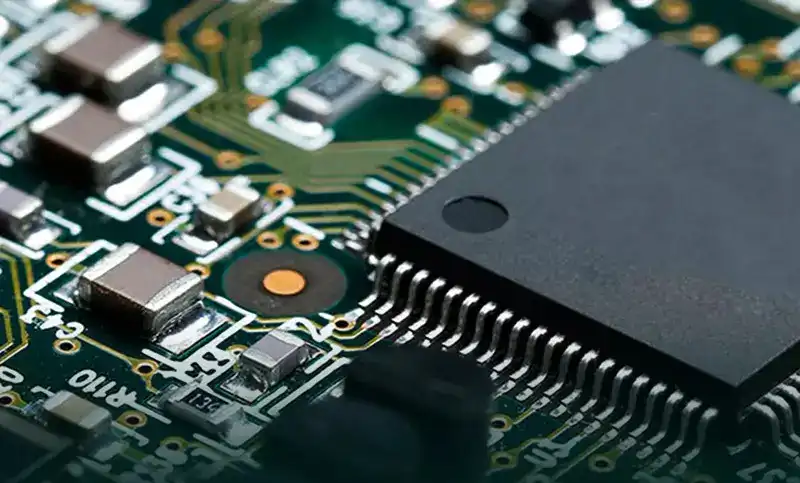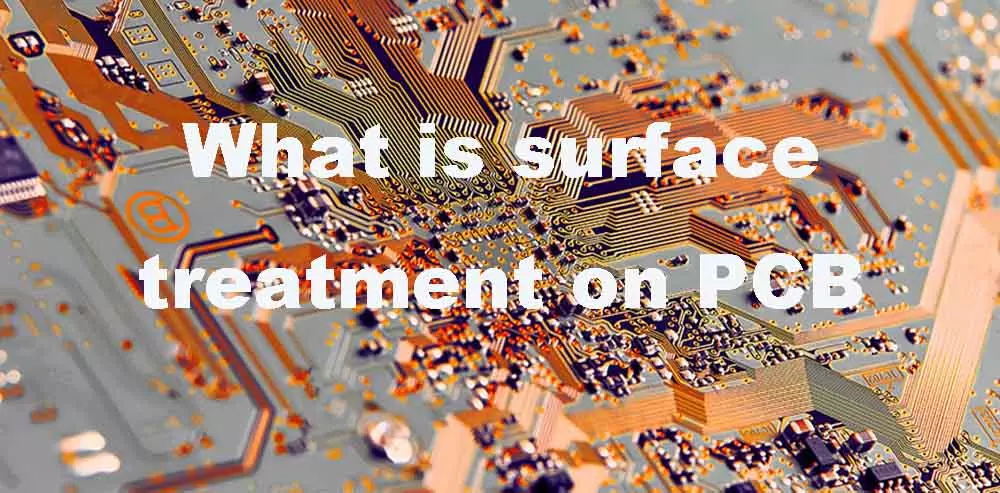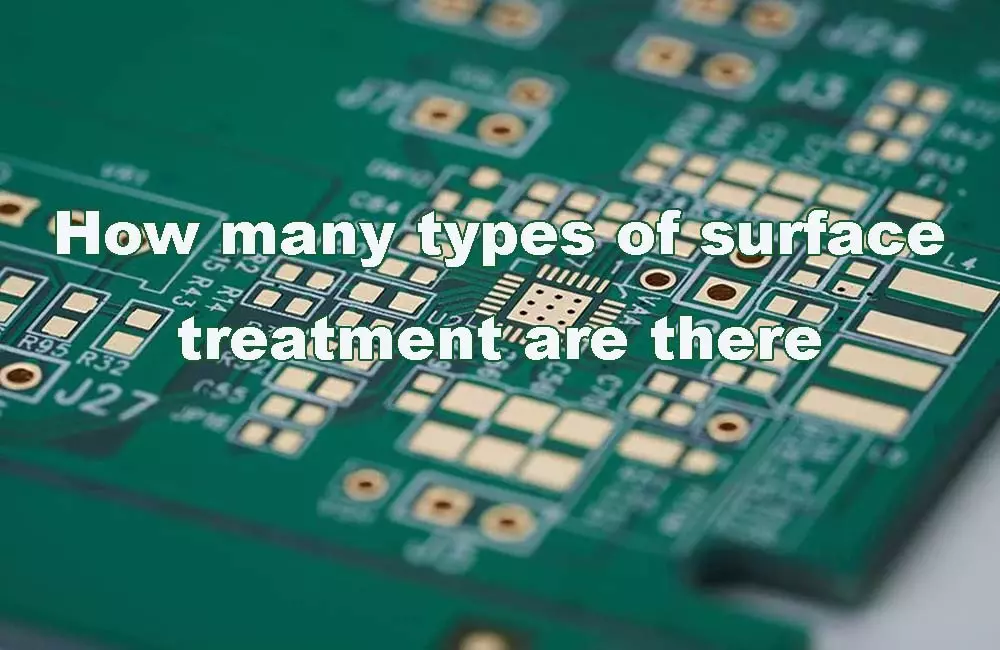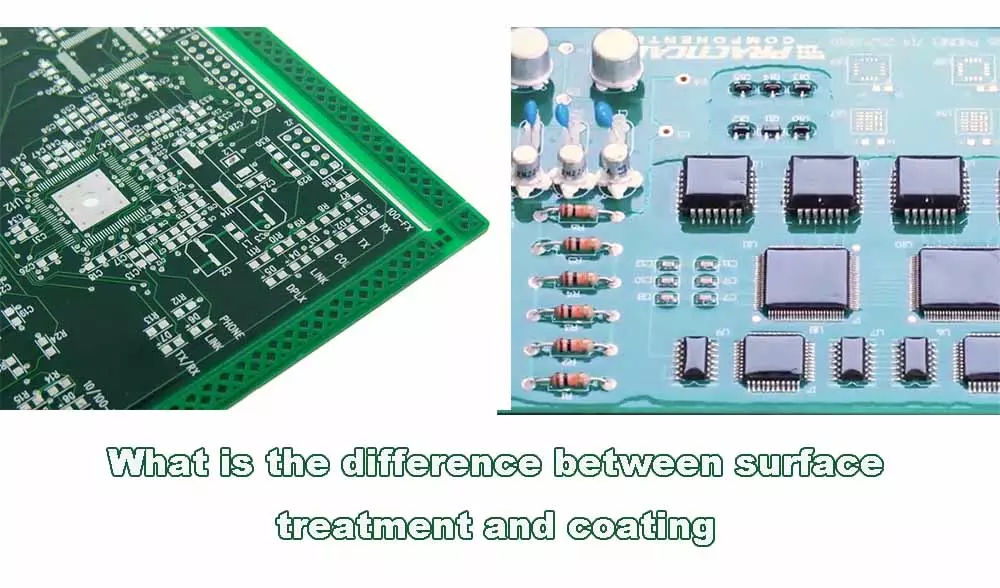
PCB surface treatment is the most important step in the PCB manufacturing and assembly process and has two main functions: to protect the exposed copper circuitry and to provide solderable surface components to the PCB during soldering.
As you may already know, printed circuit board traces and components must withstand the effects of harsh environments and remain as elements that can be worked on. Since the environment might wear off some of the features and components of a PCB such as vias or pads, soldering and manufacturing could become problematic, and hence, the use of a PCB surface treatment becomes handy.
The PCB surface treatment is a finishing layer that allows protection to the PCB for its late manufacturability (shelf-life), and they come in different options and applications depending on their type, as described below.

The objective of providing a PCB surface treatment is that of protection and assurance of the board manufacturability in terms of soldering and guarantee the provisioned component electric characteristics. Say, to prevent corrosion and wear-off from PCB pads that might happen after some time, an extra finishing layer will give it protection for the environment it was designed to work on.
There are many types of PCB surface treatments that are relevant to protection considerations to a specific PCB, mainly based on factors such as components utilized on the board, production numbers, life expectancy of the board and cost and environmental impact of the product. The main finishing types are described below:
Hot Air Solder Leveling, also known as HASL, is the most common finishing due to its low cost of application.
This finishing consists of a coating with tin and lead through the PCB while hot air bursts (hot air knives) are utilized to remove excess material from the surface.
Although this finishing provides good life expectancy (having been a long-time industry standard, it is not good when it comes to environmental impact due to having lead present in the process. However, recent developments have led to lead-free HASL that utilizes materials such as nickel and germanium as lead replacement, but unfortunately this process requires higher temperatures to be effective.
Among other disadvantages presented by HASL is its lack of compatibility for very small pitch SMT and BGA components.
OSP is an organic based protective film, hence the terminology it stands for: Organic Solderability Preservatives (also known as preflux). This leads to having RoHS compliant PCB fabrication, for boards that need to get involved in standard moisture environments, for rust prevention.
However, the consistency of the preflux does not have long shelf-life applications, nor a good protection for plated holes, hence the low planarity conservation. Moreover, since the component is sprayed, there is no guarantee on a specific thickness measurement for the organic coating. However, compared to other cheap finishing such as HASL, it has wire bondable applicability for aluminum.
Also known as ENIG (Electroless Nickel Immersion Gold), it is a PCB surface treatment consisting of a dual coating surface.
The description is simple. Nickel material is deposited on the copper from the PCB, having a thickness from 3 to 6 µm typically. Then, a thin layer of about 0.05 to 0.1 µm gold atoms is deposited over the nickel layer.
Gold is known for its great antioxidation capabilities, which in fact will provide protection for the previously deposited nickel on the PCB.However, the fact of using gold makes this PCB surface treatment very expensive, and it is not guaranteed that control on the phosphorous levels on the board can be controlled during the process, which might make the solder joints to be separated from the nickel underplate, which is known as black pad effect.
There is another variant called as Hard Gold, which deposits a higher amount of gold and nickel, which is widely used for connectors and special contacts. But again, this finishing is very expensive and must be used where it is a differentiator (quality signal transmission).

ENEPIG stands for Electroless Nickel Electroless Palladium Immersion Gold, and comes in a similar finishing fashion as ENIG, with the difference of adding a middle layer of palladium, which can provide better wire bonding from ENIG and eliminating the black pad effect. However, this technique is fresh and complex due to its maturity, making it a high-cost PCB surface treatment yet.
This PCB surface treatment provides an additional layer of silver of around 0.1 to 0.3 µm, which will diffuse into the copper, providing planarity and flatness to the PCB with RoHS compliance. It can be cheaper than gold, but it can get some rust or tarnish in the long end, which will require special storage with anti-tarnishing packaging.
This is a good option for BGA fine pitches and reworkable PCBs, but it is prone to a very short timeframe for assembling once the packaging has been opened.
It is similar on its application as immersion silver as the tin deposited will get diffused with the copper. Also, it needs special storage with anti-tarnishing packaging, making it to have low shelf-life, needing to get assembled during thirty or less days from its manufacturing.
Again, immersion PCB surface treatments provide good planarity and flatness for the board and allows small sized components such as BGA packages suitable to be worked with, however it has some drawbacks for the creation of special crystalline structures that can form on Zinc or tin structures known as whiskers (intermetallic diffusion problems) which can create transient short circuits on the places where they might become present.

In simple terms, a coating does not modify any layer component while a surface treatment does. While a PCB coating solution may be applied to one or different layers of the board, a PCB surface treatment does change the material from the outermost layer. Hence, the change on this properties will have pros in terms of shelf life and environmental resistance, but nonetheless, some cons will come from a specific method, as compared in the aforementioned treatments.
The evaluation of a specific PCB surface treatment will be linked to cost, environmental impact and components used on the specific PCB. Another factor to consider is the production volumes and time to market for the intended product, as specific finishing options provide specific timeframes to manufacturability of a particular PCB.
So that’s about everything you need to know about integrated circuits and how they work. We at Qtech are always ready to give you solid advice about PCBs, PCBA, and ICs. Talk to us today and find out more on what we offer. With over a decade of experience in this field, you’re guaranteed quality always.